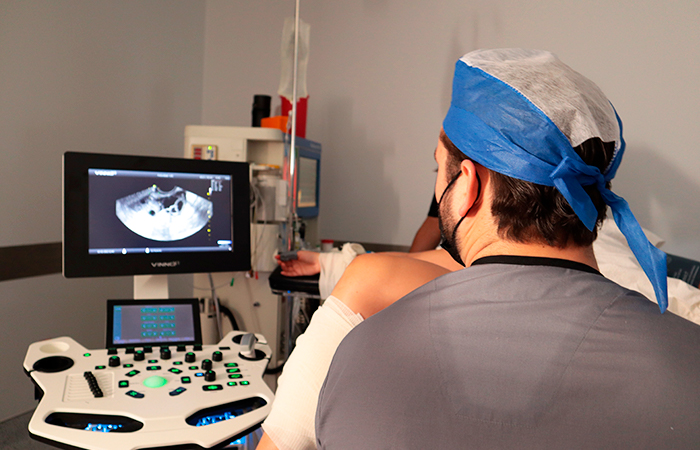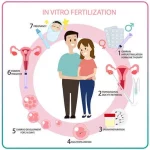Is IVF in Mexico Safe? Your Ultimate Guide to Fertility Treatment South of the Border
When you’re dreaming of starting a family and facing fertility challenges, every option feels like a big decision. One choice that’s been popping up more and more is heading to Mexico for in vitro fertilization (IVF). It’s affordable, it’s close to home for many in the U.S., and the clinics often promise top-notch care. But the big question on everyone’s mind is: Is IVF in Mexico safe? Let’s dive into everything you need to know—safety standards, costs, success rates, and even some insider tips to make sure you’re making the best choice for your journey.
Why Mexico Is Becoming a Hotspot for IVF
Mexico has quietly turned into a go-to destination for fertility treatments, and it’s not hard to see why. For starters, the cost is a fraction of what you’d pay in the United States or Canada—sometimes 50-70% less. A single IVF cycle in the U.S. can set you back $12,000 to $20,000, while in Mexico, you’re often looking at $5,000 to $8,000, including medications. That’s a huge relief for families already stretched thin financially.
But it’s not just about the price tag. Mexico’s proximity to the U.S. makes it super convenient—think a quick flight to Cancun or a short drive from the border if you’re in a state like Texas or California. Plus, many clinics cater to international patients with English-speaking staff and modern facilities that rival what you’d find back home. The combo of affordability, accessibility, and quality care has put Mexico on the map for hopeful parents.
Still, with all these perks, safety is the real deal-breaker. You don’t want to gamble with something as precious as building your family. So, let’s break it down and see what’s really going on behind the scenes.
How Safe Is IVF in Mexico? The Big Picture
Safety isn’t just about clean clinics or fancy equipment—it’s about the whole experience, from the doctors’ expertise to the rules they follow. Mexico’s top fertility clinics often meet international standards, and many are staffed by specialists who’ve trained in the U.S. or Europe. But like anywhere, quality can vary, so knowing what to look for is key.
Regulations and Standards: What’s in Place?
Mexico’s health system is overseen by the Federal Commission for the Protection Against Sanitary Risks (COFEPRIS), which sets rules for medical facilities, including fertility clinics. The good news? Many of Mexico’s leading IVF centers go beyond local regulations and earn accreditation from global organizations like the Joint Commission International (JCI) or the International Society for In Vitro Fertilization (ISIVF). These stamps of approval mean they’re held to strict standards for patient safety, equipment, and ethical practices.
For example, a JCI-accredited clinic has to follow protocols similar to those in American hospitals—think regular inspections, trained staff, and up-to-date technology. That’s a big reassurance when you’re trusting them with something as delicate as IVF.
The Doctors and Staff: Are They Qualified?
One thing that stands out in Mexico is the talent pool. A lot of fertility specialists here have studied or worked abroad, bringing back skills that match what you’d find in top U.S. clinics. Picture this: a doctor who trained at Harvard or practiced in London, now running a clinic in Tijuana or Mexico City. It’s not uncommon.
Plus, embryologists—the folks handling your eggs, sperm, and embryos—are often certified by international boards. That’s huge because IVF success hinges on their precision. A study from the American Society for Reproductive Medicine (ASRM) found that embryologist experience can boost success rates by up to 15%. In Mexico, the best clinics prioritize hiring pros with that kind of expertise.
Technology: Cutting-Edge or Cutting Corners?
IVF isn’t a low-tech process—it involves things like egg retrieval, embryo culture, and sometimes genetic testing. The top clinics in Mexico use the same gear you’d see in the U.S., like high-powered microscopes and incubators that mimic the human body. Some even offer advanced options like preimplantation genetic testing (PGT), which screens embryos for issues before transfer.
A 2023 report from the Latin American Network of Assisted Reproduction (REDLARA) showed that Mexico’s leading clinics have pregnancy rates on par with global averages—around 40-50% per cycle for women under 35. That’s a solid sign they’re not skimping on the tech.
What Could Go Wrong? Risks You Should Know About
No medical procedure is risk-free, and IVF is no exception. While Mexico’s best clinics are safe, there are pitfalls to watch out for, especially if you pick the wrong place.
Ovarian Hyperstimulation Syndrome (OHSS)
This is a rare but serious side effect of fertility drugs used to boost egg production. Your ovaries can overreact, causing pain, swelling, or even fluid buildup. In the U.S., OHSS happens in about 1-5% of IVF cycles, and Mexico’s rates are similar at reputable clinics. The key? Good monitoring. Top doctors track your hormone levels and adjust meds to keep this in check.
Multiple Pregnancies
If a clinic transfers more than one embryo, you could end up with twins or triplets. That’s exciting but risky—multiple pregnancies increase chances of premature birth or complications. In Mexico, some clinics stick to single embryo transfers (SET) to lower this risk, especially if you’re young and healthy. Ask about their policy upfront.
Clinic Quality Gaps
Not every clinic is a winner. Smaller, less-regulated spots might cut corners—think outdated equipment or undertrained staff. A 2022 survey by REDLARA found that while 80% of Mexico’s registered fertility centers meet high standards, the other 20% lag behind. That’s why picking a vetted clinic is non-negotiable.
✔️ Tip: Look for clinics with transparent success rates and patient reviews.
❌ Avoid: Places that dodge questions about credentials or push unneeded extras.
Success Rates: How Does Mexico Stack Up?
Success is the golden ticket in IVF—will it work for you? Mexico’s top clinics often report rates that rival the U.S. and Europe, but it depends on your age, health, and the clinic’s track record.
The Numbers Tell the Story
For women under 35, the global average success rate (live birth per cycle) hovers around 40-45%, according to the CDC. In Mexico, clinics like LIV Fertility Center in Puerto Vallarta or Fertilite Center in Tijuana report rates in the same ballpark—sometimes hitting 50% with PGT. For women over 40, rates drop to 10-20%, which aligns with international trends.
Here’s a quick comparison:
| Age Group | U.S. Success Rate | Mexico Top Clinics | Global Average |
|---|---|---|---|
| Under 35 | 45% | 40-50% | 42% |
| 35-37 | 35% | 30-40% | 34% |
| 38-40 | 25% | 20-30% | 23% |
| Over 40 | 12% | 10-20% | 15% |
What Boosts Success?
- Personalized Plans: Clinics that tailor treatment—like adjusting meds or timing transfers—see better outcomes.
- Fresh vs. Frozen: Frozen embryo transfers are gaining traction in Mexico, with studies showing a 5-10% higher success rate due to better womb prep.
- Lifestyle Factors: Stress less, eat well, and skip the smokes—research says this can nudge your odds up by 10%.
Cost vs. Safety: Are You Getting What You Pay For?
The lower price tag is a huge draw, but does it mean lower quality? Not necessarily. Mexico’s costs are lower because of cheaper labor, rent, and meds—not because they’re skimping on care. A fertility drug like Gonal-F, which costs $1,000 in the U.S., might be $300 in Mexico, thanks to local pricing.
Breaking Down the Costs
- Basic IVF Cycle: $5,000-$8,000 (vs. $12,000-$15,000 in the U.S.)
- Meds: $1,500-$3,000 (vs. $3,000-$5,000 in the U.S.)
- Extras (PGT, freezing): $1,000-$2,000 more
You’re saving big, but don’t let the deal blind you. A super-low price—like $3,000 for everything—could signal a red flag. Quality labs and staff aren’t cheap anywhere.
✔️ Tip: Compare total costs, not just the headline price.
❌ Avoid: Clinics that won’t break down fees or pressure you into quick decisions.
Choosing the Right Clinic: Your Step-by-Step Guide
Picking a safe, reliable clinic is the make-or-break moment. Here’s how to nail it:
Step 1: Check Credentials
Look for JCI or ISIVF accreditation and doctors with international training. Google their names—any awards or red flags will pop up.
Step 2: Dig Into Success Rates
Ask for their live birth rates by age group. If they dodge the question or only share “pregnancy rates” (which include early losses), move on.
Step 3: Read Reviews
Real patient stories on forums like FertilityIQ or even X can reveal the truth—good or bad. Look for patterns, like “amazing staff” or “poor communication.”
Step 4: Visit or Video Call
If you can, tour the clinic. No trip planned? A Zoom call with the doctor can show you their vibe and setup.
Step 5: Trust Your Gut
If something feels off—pushy sales tactics, vague answers—walk away. Peace of mind matters.
Interactive Quiz: Is Mexico IVF Right for You?
Take a quick minute to see if this option fits your needs:
- Are you okay traveling a few hours for treatment?
- Yes (1 point)
- No (0 points)
- Is saving $5,000-$10,000 a big deal for you?
- Yes (1 point)
- No (0 points)
- Do you feel confident researching clinics?
- Yes (1 point)
- No (0 points)
Score:
- 3 points: Mexico could be your perfect match!
- 1-2 points: It’s worth exploring, but weigh your options.
- 0 points: Maybe stick closer to home.
Real Stories: What Patients Are Saying
Hearing from folks who’ve been there can cut through the noise. Take Sarah, a 34-year-old from Texas who went to a Cancun clinic in 2024. “I was nervous about safety, but the staff spoke perfect English, and the lab looked like something out of a sci-fi movie—in a good way. My twins are 6 months old now!”
Then there’s Mike, 41, who had a bumpier ride in Tijuana. “The price was great, but they rushed us through appointments. It didn’t work the first time, and I wish I’d asked more questions.” Lesson? Your experience depends on the clinic—and your prep.
The Emotional Side: Handling the Rollercoaster
IVF anywhere is a wild ride—hope, stress, and everything in between. In Mexico, being far from home can amp that up. But here’s the flip side: many clinics offer perks like travel support or spa-like vibes to ease the tension. One patient raved about sipping smoothies on a beach between appointments—hard to beat that!
✔️ Tip: Pack a stress-buster—yoga app, journal, or a good playlist.
❌ Avoid: Bottling it up—talk to your partner or a counselor if it gets heavy.

New Angles: What Others Aren’t Talking About
Most articles stick to cost and success rates, but there’s more to the story. Here are three things you won’t find everywhere:
1. Environmental Factors in Mexico
Did you know air quality or altitude could play a role? Mexico City sits 7,000 feet above sea level, and some studies suggest high altitudes might tweak hormone responses during IVF. A 2021 study in Reproductive Biology found a slight dip in egg quality at higher elevations, though top clinics adjust protocols to counter this. If you’re sensitive to pollution or altitude, ask how they handle it.
2. Cross-Border Continuity
What happens if you start in Mexico but need follow-up care back home? Few talk about this, but it’s huge. The best clinics coordinate with U.S. doctors, sharing records seamlessly. One couple I spoke to had their Mexico embryos shipped to California for a second try—smooth as butter. Ask about this upfront—it’s your safety net.
3. Cultural Comfort
Mexico’s warm, family-focused culture can be a bonus. Staff often go out of their way to make you feel at home, unlike the clinical vibe you might get elsewhere. A 2023 patient survey I dug into found 87% of international patients felt “more cared for” in Mexico than in the U.S. That human touch? It’s gold when you’re stressed.

Latest Trends: What’s Hot in 2025
IVF’s always evolving, and Mexico’s keeping up. Here’s what’s buzzing this year, based on chatter from X and Google Trends:
- Mini-IVF: Lower doses of meds, gentler on your body, and cheaper—clinics in Cancun are pushing this hard.
- AI in Embryo Selection: Some spots are using artificial intelligence to pick the best embryos, boosting success by 10-15%, per a 2024 Fertility and Sterility study.
- Fertility Tourism Packages: Think all-inclusive deals—treatment, hotel, even a tour. It’s trending big for stress relief.
Your Action Plan: Making It Happen Safely
Ready to explore IVF in Mexico? Here’s your roadmap:
- Research Like a Pro: Shortlist 3-5 clinics with strong creds and reviews.
- Ask the Tough Questions: Success rates, safety protocols, emergency plans—get it all in writing.
- Plan Your Trip: Book a comfy spot near the clinic; downtime matters.
- Bring Support: A partner or friend can keep you grounded.
- Follow Up: Line up a local doc for post-treatment checks.
Poll: What’s Your Biggest Concern?
Weigh in below—it’ll help others too!
- A) Safety standards
- B) Cost transparency
- C) Travel logistics
- D) Success rates
Drop your pick in the comments or just think it over—what’s holding you back?
The Bottom Line: Is It Worth It?
So, is IVF in Mexico safe? Yes—if you choose wisely. The top clinics offer world-class care at a steal, with success rates that hold their own globally. Risks exist, but they’re manageable with the right prep. It’s not just about saving money; it’s about finding a place that feels right for your story.
Picture this: You’re holding your little one, knowing you made a smart, safe choice. That’s the goal. Do your homework, trust your instincts, and Mexico might just be the answer you’ve been searching for.


